February 14, 2023 feature
This article has been reviewed according to Science X's editorial process and policies. Editors have highlighted the following attributes while ensuring the content's credibility:
fact-checked
trusted source
proofread
A bat-inspired framework to equip robots with sound-based localization and mapping capabilities
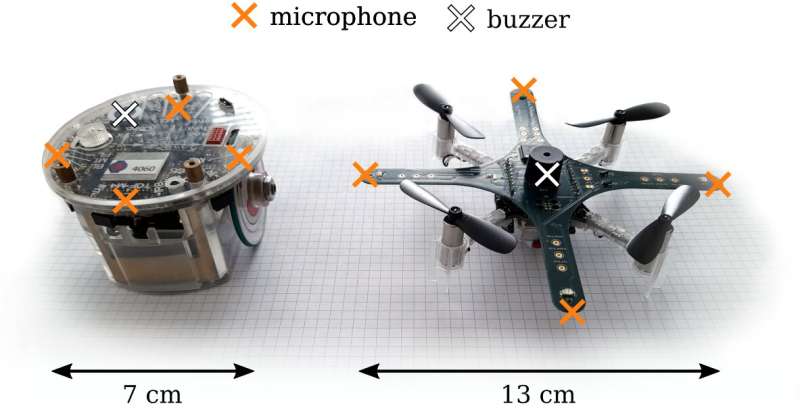
Bats have the innate ability to move around in the dark, even when they cannot visually perceive their surroundings. This fascinating ability is grounded in their emission of ultrasonic chirps, which produce unique patterns of echoes that offer information about the location of nearby objects of interest or obstacles.
Developing robots with similar sound-based localization capabilities could have significant advantages, as it could reduce their reliance on sophisticated and expensive sensing systems (e.g., cameras, lidar, etc.). This could lower these robots' production costs, ultimately facilitating their large-scale deployment.
Researchers at EPFL have recently created a new framework to enable sound-based localization and mapping in unmanned aerial vehicles (UAVs), commonly known as drones. This framework, introduced in a paper published in IEEE Robotics and Automation Letters, merely relies on the use of simple buzzers and low-cost microphones.
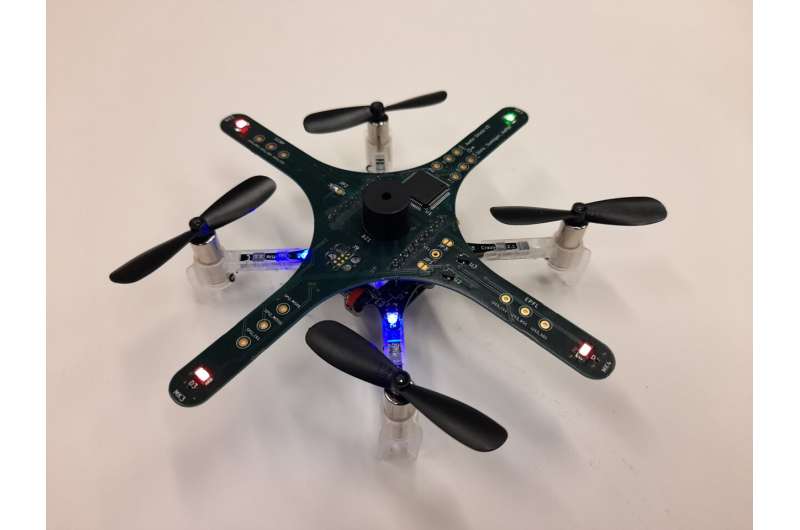
"We were interested in exploring whether microphones could be used for spatial navigation of robots, in particular drones," Frederike Dümbgen, one of the researchers who carried out the study, told Tech Xplore.
"Microphones are already added to many robots for other tasks, especially for communication with humans, so exploiting them for navigation would come at no additional hardware cost. We were optimistic that it's possible based on the abilities of bats: these animals navigate at night and in their caves using mostly sound with astonishing performance."
While some previous studies tried to achieve sensor-less localization using ultrasounds, similar to those emitted by bats, Dümbgen and her colleagues set out to create a localization and mapping system that only relied on audible sounds. Such an approach could significantly reduce a robot's fabrication cost and weight, as buzzers and microphones are often already available on robots.
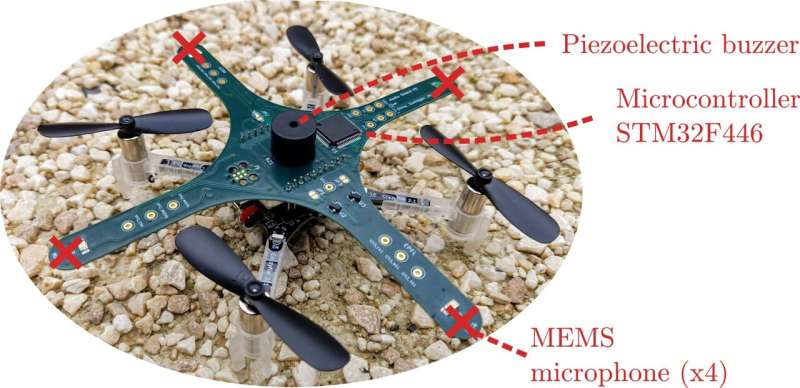
"When designing our new audio-based navigation algorithms we took these factors into account, as we wanted them to run effectively on any platform with at least one microphone and speaker," Dümbgen explained. "In particular, we demonstrated our algorithm on platforms with only cheap MEMS microphones and buzzers, rather than expensive measurement microphones and loudspeakers."
The way this works is that the robots emit frequency sweeps via a series of onboard buzzers and then use the response that these sweeps trigger in onboard microphones to detect walls in their surroundings.
"If a strong reflector such as a wall is around, the sound is reflected and the reflected sound interacts with the direct sound at each microphone," Dümbgen said. "Depending on the distance and frequency, these two signals either attenuate or amplify each other. Therefore, looking at the loudness of the microphone signal over the emitted frequencies, we can determine if there is a reflector nearby and at what distance it is."
Using multiple microphones and measurements collected at subsequent positions, the team's system can also determine the angle at which a reflector is in relation to the robot.
The key advantage of this sound-based localization and mapping system over previously proposed approaches is that it does not require particularly sophisticated microphones and speakers.
This is because it leverages audio interference, rather than time of flight data. This allows it to generate longer signals, enabling good signal-to-noise ratios even when using cheap hardware components, and removing the need to precisely control the timing of collected measurements.
-
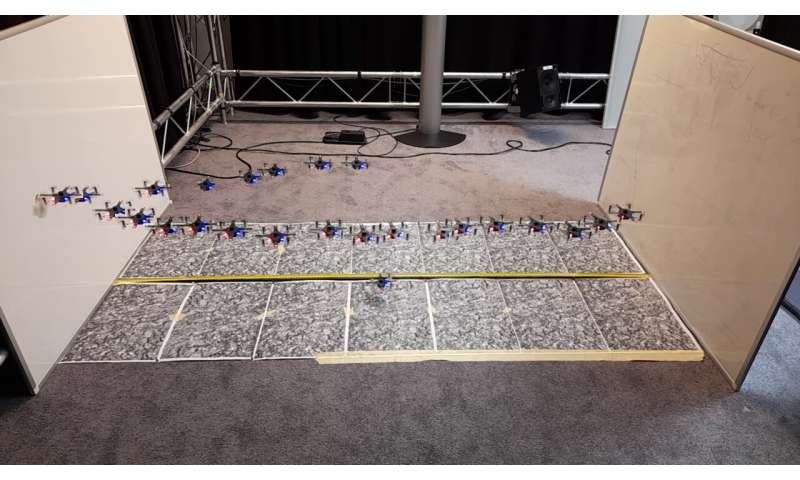
Credit: Dümbgen et al. -
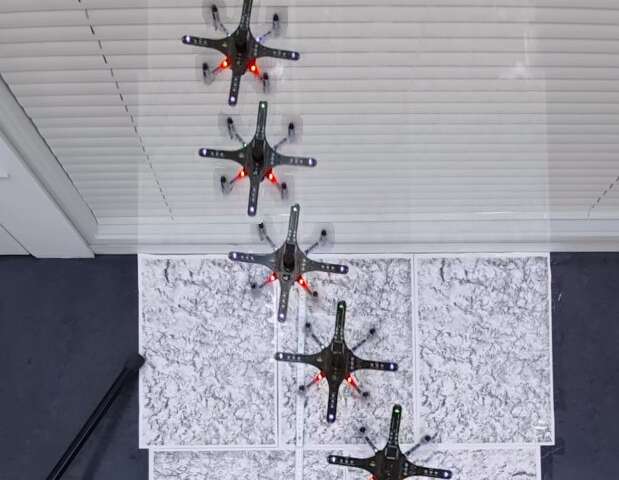
Credit: Dümbgen et al.
"By exploring echolocation on the Crazyflie drone, we identified the main challenges that robust echolocation algorithms developed for drones need to deal with—namely, motion uncertainty and varying propeller noise," Dümbgen said.
"We hope that the results can provide a good starting point for follow-up research, to keep pushing the limits of echolocation for robotics. For this purpose, we open-sourced the full software and hardware stack to lower the entry bar for roboticists interested in exploring the audio modality for spatial navigation on robots."
In the future, the system created by this team of researchers could be used to create low-cost and light-weight robots that can navigate environments using sounds, without the need to use advanced sensors such as cameras. One interesting research direction would be to create a new system that uses a drone's own propeller noise to achieve echolocation, instead of an active sound source.
"Since drones typically emit loud noise, this would turn this nuisance factor into a feature," Dümbgen added. "Other research directions that could be explored include merging the sound-based algorithm with other 'senses' such as vision, and switch between different operation modes depending on the environment. Intelligent species are very good at this task: we as humans for instance rely more on our ears when it's dark and on our eyes when it's noisy. I believe that truly intelligent robots should also have this capability."
More information: Frederike Dumbgen et al, Blind as a Bat: Audible Echolocation on Small Robots, IEEE Robotics and Automation Letters (2022). DOI: 10.1109/LRA.2022.3194669
© 2023 Science X Network
















